What goes on in the mind of a wgfoodie (whole grain foodie)? I often wonder myself. Here’s to putting a voice to my passion in both food and semi-food related realms.
_ _ _ _ _ _ _ _ _ _ _ _ _ _ _ _ _ _ _ _ _ _ _ _ _ _ _ _ _ _ _ _ _ _ _ _ _ _ _ _ _ _ _
“My Week in Italia“
In early 2012, I spent a week in Italy – Sicily, Milan, and Venice to be exact. I approached the trip expecting to revel in the culture, flood my senses with the bounty of history, escape from my day-to-day routine with a refreshing change in scenery, and obviously fully tantalize my taste buds with food.
I sit here back home with expectations far exceeded. I also carry with me a newfound appreciation for the country, for the art of travel, and most notably, for the art of food. I often instigate the importance of travel. Beneath the layers of fun and relaxation lie curiosity, education, growth, and compassion for outside cultures. Travel done right manifests clarity and epiphanies masked at home by overflowing e-mails, monotonous errands, late nights in the office, and mountains of bills. By taking yourself out of YOU (your comforts, your neighborhood grocer, your 6AM treadmill runs), you discover a more beautiful you.
Breathing the Italian air and engaging in the Italian lifestyle, I was instantly able to put down my walls and appreciate every little moment for what it was. I was hesitant that at first I would need to remind myself to be present, but this came naturally from the moment I stepped off the plane.
I marveled in:
The architecture – both the grandiose and the more commonplace. The old and modern.
The details – little details, simple details, that often tell the biggest stories.
The language – melodic and lyrical, seemingly spoken with a purpose.
The agriculture – streets lined with orange trees, fields of lemon trees, produce stands filled to the brink.
The food – the taste of passion neither photographs nor words could ever do justice.
_ _ _ _ _ _ _ _ _ _ _ _ _ _ _ _ _ _ _ _ _ _ _ _ _ _ _ _ _ _ _ _ _ _ _ _ _ _ _ _ _ _ _
“Top Chef v. The Biggest Loser”
I am not a huge follower of Bravo’s Top Chef Masters series, but I do enjoy sitting through a re-run once in a while. On a recent episode, the chefs were tasked with a mission to recreate some caloric dishes into healthier compositions without compromising on flavor. Their audience and critics? The Biggest Loser contestants.
The exact mission was to create a 3-course meal while keeping the calorie count under 1500 – for all 3 courses. Considering most of the dishes (bacon cheeseburger, deep dish pizza, chicken parm…) are well over 1500 calories themselves, the chefs were in for a challenge. Because naturally, as renowned chefs with reputations on the line, they could not put a piece of cooked white chicken breast on a plate and call it a day.
This particular challenge struck my core because I strive to do this every day. I find that the biggest challenge is not in cooking healthy but rather, in making the dish appealing in both taste and appearance.
For instance, when I browse through recipes to gather inspirations for my meals, I never write down the actual recipes. I take some notes and then recreate those dishes into my own. Call me crazy but I look at pictures of food to inspire my weekly dinner menu. This technique allows me to keep my dishes a). original and b). healthy because the purpose of this is to ultimately change up some of the ingredients originally used.
What are some factors you need to consider when making the transformation from ‘unhealthy blah’ to ‘healthy bliss.
Break down the dish and figure out WHAT makes the dish un-healthy. Is it the ingredients? Is it the cooking method? As you weed through solutions to approach these questions, you’ll be pleasantly surprised at how a few simple changes can result in noticeably dramatic and health-forward lifestyles.
Here are a few of [what I think are] the most common “HELP ME!” run-ins with solutions:
[Note: If you’re not comfortable going cold turkey with these solutions, I recommend easing into them]
EXCESS CARBS
Solution: Substitute sprouted grain bread for white bread because these days, ‘whole wheat’ does not necessarily translate to healthy. Use quinoa flour/oat flour/chestnut flour in the place of white flour. Opt for brown rice pasta over white pasta. Choose germinated brown rice, farro, or quinoa over white rice. Substitute sweet potato or sunchokes for white potato.
EXCESS SODIUM
Solution: Use those fresh herbs and spices! Doing so, you add to layer upon layer to your flavor profiles. Introduce other spectrums of flavor like acidity, heat, and zest to distract your taste buds from the salt. Eventually, your taste buds will reset themselves and not crave salt as much allowing you to better enjoy foods as they are in their natural states.
EXCESS “BAD” FAT
Solution: Substitute healthier oils (avocado oil, grape seed oil, olive oil, walnut oil) and toss that shortening, lard, blended vegetable oil. Always keep in mind the varying smoke points of oils as well.
FRIED FOODS
Solution: Bake the dish in the oven (yes – you can make chicken parm or eggplant parm in the oven). In the summer, utilize the grill! Grilled anything is better (and more fun) than fried anything IMO.
CORN GALORE
Solution: Opt for blue corn over yellow corn and read those labels carefully because corn is cheap and used widely in many packaged goods (even those you would not expect).
EXCESS SUGAR
Solution: Incorporate the juices from fruits to emit a natural sweetness and added flavor. Substitute raw agave or pure maple syrup (as long as you utilize them in moderation) for sugar.
HEAVY CREAM
Solution: Try pureeing beans, avocado, Greek yogurt, or tofu with olive oil. When making pasta, always incorporate some of the pasta water to give the dish added flavor and starchiness.
Rewind back to Top Chef Masters. In the end, all chefs were able to successfully complete their missions. Some were more successful than others, but I think it proves that it can be done and that anyone can follow suit by opening his/her culinary horizons. Eating healthier means being open to trying new foods and new adaptations of foods. As with anything else in life – don’t be ignorant with food!
The most beautiful outcome is that of a healthier lifestyle where your body no longer needs or want those foods that are “toxic.” And lastly, it’s OKAY to have a cheat day once in a while. In fact, I encourage it to stay on track!
_ _ _ _ _ _ _ _ _ _ _ _ _ _ _ _ _ _ _ _ _ _ _ _ _ _ _ _ _ _ _ _ _ _ _ _ _ _ _ _ _ _ _
“Edible Magazine – Do you read?”
If you’ve yet to pick up a copy of your local Edible magazine, I highly recommend you do so. The Edible communities, as they call themselves, publish 70 beautiful culinary cultured magazines. If you want to be in-the-know of your local farmers, local shops, local restaurants/cafes, a copy of your local Edible will give you all that and more.
Many years ago, I worked (albeit short lived) for a magazine. The publication aimed to pride in everything local with a unique artistic expression. Even though that magazine soon folded (it’s tough out there, you know), I learned so much about what goes on behind the scenes pre and post production.
So perhaps when I pick up any magazine now, I have a tinge of appreciation for what went into the product I can hold in my hands… and then quickly return to the shelf as I go to pay for my groceries. And that’s just it. These days, the number of magazine subscribers and devotees is dwindling. With the internet at your service and the ability to flip through a magazine on your coffee break, the desire to purchase a publication seems dispensable.
Luckily, there are exceptions to rules.
The one magazine I DO bring home with me is a copy of my local Edible. Already being an advocate on anything local, I have no problem supporting a magazine that aims to do the same in masses.
It seems that the public is quickly catching on to this Edible family as they have just been awarded the 2011 Publication of the Year James Beard award. Pretty big deal. Not an easy feat. Oh yea, and the vote was unanimous.
Below is the actual text garnered from the award. A sincere congratulations and gratitude to the entire Edible team!
_ _ _ _ _ _ _ _ _ _ _ _ _ _ _ _ _ _ _ _ _ _ _ _ _ _ _ _ _ _ _ _ _ _ _ _ _ _ _ _ _ _ _
“Go local. Cook more. Feel better.”
I recently watched the documentary, “Food, Inc.,” and felt compelled to spread its message with you. I have to say, I knew what I was getting into before the film started rolling. I was already pretty well versed of the backlash going on in the food industry. So while I was not entirely shocked by what I saw in those 94 minutes, I was reminded why I cook and promote local foods and farms.
The voices behind this documentary are more than angry; they are disappointed. It ultimately comes down to greed and business politics. When those two words are used to describe anything, you know you’re in for trouble. How these became so intertwined with what we put in our mouths is deplorable at best.
.:.
Here are some important take-away’s from the film:
FACTORY FARMING
The problem? Of the 10 billion animals raised and slaughtered to please our palates each year, nearly all are raised under factory farming conditions. What does that mean? Animals are treated like “objects” and the workers stripped of their rights. The utter inhumane treatment is apparent in how these animals are raised (dark, closed-off spaces; sinking in their own feces) to what they are fed (cheap corn that makes them grow fatter and bigger faster than their organs can handle).
Let’s take Perdue, since they put millions of dollars into their advertising to back their motto: “A Family Commitment to Quality Since 1920(TM).” Sure, they contract local farmers to grow their chickens BUT under their terms. These farmers make little to no salary raising chickens as described above, barred under strict contracts that prohibit them from having a voice. Perdue then contracts the unemployed from other countries who will do almost anything to support their families, aka illegal immigrants, to do the savage factory work. All this so consumers can buy a package of chicken for $10 cheaper than buying “local.”
By the way, factory farming is used for produce as well. It’s amazing what chemicals and technology can do. Perfectly round bright red tomatoes in… the middle of the winter? Hm.
Factory farming is the catalyst for food-borne illnesses and seeks to keep the curtain shut behind what really makes up the food you put in your mouth each and everyday.
GLOBAL FOOD CRISIS
Just here in the US, millions of Americans struggle to support their families with enough food. These consumers cannot be bothered by what the labels say or don’t say – they’re too busy trying to survive and make it through the week. The decision of whether they should buy the Kellogg’s Strawberry Frosted Pop Tarts, on sale 2 for $5!, OR the small pint of organic strawberries that are $5.49/lb is not even a question.
The big corporations are well aware of this crisis and, instinctively, they thrive on it.
The price and efforts of organic farming will not change. So what can we do? Big corporations will always be around (business politics – bleh), but if you are fortunate enough to have the option of buying local, doing so is like placing a vote of support. Eventually, the “votes” will rack up, communities will come together, and one day come up with a means to get better food to those who need it most.
This will… take time. Is it impossible? Absolutely not. What can you do now? Aside from buying organic, buying local, reading those labels, you can make sure the local farmers markets accept food stamps.
.:.
I am incredibly passionate about this issue and am pleased that my husband groans over the hour long grocery trips we take each week. I am proud of the time I take to read the labels and of my support for local farms and for shelling out the extra dollars for local ingredients. I am thankful for my love of whole food/whole grain cooking and am this close to quitting my day job to put on a helmet and join the front line of offense to fight for our beloved food industry.
What can you do? Go local, cook more, feel better:
http://apps.ams.usda.gov/FarmersMarkets/
_ _ _ _ _ _ _ _ _ _ _ _ _ _ _ _ _ _ _ _ _ _ _ _ _ _ _ _ _ _ _ _ _ _ _ _ _ _ _ _ _ _ _
“A butcher for them all.”
Sneak your way through the hoards of people cascading in NYC’s Eataly and you will stumble upon a butcher. Not just any butcher – a vegetable butcher. It’s a wildly fantastic idea.
It all started over dinner between Mario Batali and Jennifer Rubell. Rubell also happens to be a Harvard and CIA grad, food artist, and author. Bravo, Batali.
Never bought an artichoke because it intimidates you? Fear not – the vegetable butcher will show you exactly how it’s done. Too lazy to peel carrots? Vegetable butcher at your service. Hate taking the time to properly clean and dry spinach? Bring it to the vegetable butcher.
Even if you know how to tackle a romanesco veronica, the art that is the vegetable butcher will leave you staring.
Like other forms of butchering, Eataly portrays the vegetable finesse as an art. What’s more? These chefs go beyond their masterful techniques and showcase a true appreciation for vegetables (and fruit). For that alone, I respect their coveted title of Vegetable Butcher.
Video HERE.

_ _ _ _ _ _ _ _ _ _ _ _ _ _ _ _ _ _ _ _ _ _ _ _ _ _ _ _ _ _ _ _ _ _ _ _ _ _ _ _ _ _ _
“Why cook?”
Every cook and chef, professional or not, has within him/herself a catalyst to cook. It could be from something simple like, “I do it for my family,” to, “This is my absolute passion and I would not be happier doing anything else.” Inspiration can be muted or it can be pronounced. I think that if everyone digs deep enough as they peruse their pantry or chop up that onion, the inspiration will manifest itself (if not in mind) in the food.
My inspiration comes from a few places.
1). Health: “You are what you eat.” It’s true, you know. The benefits of knowing exactly what goes into each dish makes the efforts worthwhile and food taste better. Tenfold.
2). Curiosity: The mere knowledge that there exists infinite possibilities and techniques to play with thousands of ingredients is enough to get my wheels spinning.
3). Culture: I believe that the best food comes out of cooks/chefs who have tasted and experienced different cultures. If you want your taste buds to be wow-ed, you need to travel out of the States. Remember the tastes, flavor combinations, and ingredients used across the globe. Bring them back into your own kitchen.
4). Escape: Cooking is my go-to method for escape. Mentally. Standing in the kitchen is one of the few times in my day that my mind allows me to completely focus on just one thing. Nirvana.
So… what inspires you?
|
|
_ _ _ _ _ _ _ _ _ _ _ _ _ _ _ _ _ _ _ _ _ _ _ _ _ _ _ _ _ _ _ _ _ _ _ _ _ _ _ _ _ _ _
“Xiao long bao”
Dim sum lovers will hopefully agree with me here in saying that finding the perfect xiao long bao can be a challenge. But when found, be ware of eating them by the masses.
What is xia long bao? It’s a Shanghai soup dumpling. Think of wonton soup backwards. The “soup” is actually inside the dumpling. I have always wondered how the chefs actually get the liquid inside these little dumplings. They’re always perfectly sealed without a hole in site. The problem is, before I even have the time to examine their composition, the dumplings usually disappear into everyone’s mouths.
As such, I was delighted to find this mini clip that showcases a master xiao long bao artist at work.
_ _ _ _ _ _ _ _ _ _ _ _ _ _ _ _ _ _ _ _ _ _ _ _ _ _ _ _ _ _ _ _ _ _ _ _ _ _ _ _ _ _ _
“I’LL HAVE ONE DUCK PRESSED AT THE TABLE, PLEASE.”
If you’re in NYC, have the money, and managed a coveted reservation at Daniel, you might as well throw it all in and go for the pressed duck. Who needs to eat the next day… or week, right? As long as you lick every last bit of that duck juice off the plate – clearly, it’s enough to wash all those empty wallet worries away. I kid. Sort of.
This dish is not just about the flavor (which I’m sure is nothing short of ‘to die for’), but also about the presentation and the entire restaurant turning around in their seats to gawk. So here’s a run-down of what to expect from the duck of all ducks:
- Marinated for two days in a mixture containing red currant jam and port wine. Then it’s roasted. Whole.
- A red wine marinade is concocted with duck, foie fras, cognac, etc etc (like they would reveal).
- Chef Daniel removes the breasts and legs. That’s what you eat.
- His staff brings out the duck and wheels in a theatrical cart, complete with a chrome plated press and a wheel on top.
- Into the press goes the remainder of the duck. The wheel is cranked and all those duck juices are s q u e e z e d out.
- Those juices go into a pan to create the most awesome duck jus ever.
As Ted Allen says in an episode of The Best Thing I Ever Ate – Last Supper where Food Networks chefs chronicle their last supper, “This is going to be a staggeringly expensive meal. But what do I care? I’m dead tomorrow.” Touché.
_ _ _ _ _ _ _ _ _ _ _ _ _ _ _ _ _ _ _ _ _ _ _ _ _ _ _ _ _ _ _ _ _ _ _ _ _ _ _ _ _ _ _
AND THE SECRET INGREDIENT IS… TWITTER-KEY?
Love or hate Food Network, the reason for its popularity is much attributed to the “relationship” viewers form with the network’s chefs and cooks. If you break it down, it’s kind of a silly concept, right? You’re basically sitting in front of the TV watching someone cook. And talk. No drama, no action-filled chases through dark alleys, no romantic happy-endings under the Eifle Tower. Just cooking.
It’s a bit like the Twitter phenomena, right? Why do we care so much about what celebrities had for lunch? Relatability (if that’s even a formal word). In other words, for a few brief moments, we feel like we can relate to celebrities and that we’re allowed to “enter” their lives and get to “know” them.
Here’s one such example. A Twitter conversation had between Chef Michael Symon and Chef Mario Batali over brined v. non-brined turkey. Would anyone care if two home cooks dueled it out over Twitter? Probably not. But for the sake of being in the Thanksgiving spirit and the show ‘Iron Chef’ being slightly more entertaining than watching Paula Dean fry a turkey, I present – what happens when two Iron Chefs battle it out… on social media.










_ _ _ _ _ _ _ _ _ _ _ _ _ _ _ _ _ _ _ _ _ _ _ _ _ _ _ _ _ _ _ _ _ _ _ _ _ _ _ _ _ _ _
FOODIES REJOICE
Another reason to love NYC during the holidays – foodie holiday window displays! This year, Barney’s on the Upper East Side is spreading their holiday cheer with a theme that brings everyone together. Food. Glorious food.




_ _ _ _ _ _ _ _ _ _ _ _ _ _ _ _ _ _ _ _ _ _ _ _ _ _ _ _ _ _ _ _ _ _ _ _ _ _ _ _ _ _ _
“A HEALTH REVOLUTION”
I love food and cooking for obvious reasons (the yum factor and the fun), but what I aspire to do with my passion is share it with others. Of all ages. I often think through my own life and how food has always played an integral part of my growth (mentally and physically).
When I was a kid, media was just starting to come into play and buzz around “healthy” foods was just starting to float ashore. These days, media is everywhere, kids have access to every form of technology, and the battle between food and health is abundant. Not an easy place for kids to be.
Kids don’t yet have the wisdom or experience to know what they should eat and how much they should exercise to best benefit their individual wellness. Let’s face as it – as adults, we are still learning. I think it’s OUR responsibility to guide kids in the right direction. Kids will always be kids and make their own decisions [as they should], but if we can instill good habits one child at a time, we can be part of this revolution of kids who grow up with healthier lifestyles and fewer health risks.
I think we can start young with kids and introduce them to playful books, TV shows, video games, and classes that promote good foods and healthy lifestyles. Too much information and complexities for kids to digest? Not at all. Being healthy is a proven simple concept, right? You eat the right foods and incorporate exercise into your weekly routine.
The only reason why we have complexities is because we stray away from this ideal. People think they can out-smart the system with fad-diets, eating trends, ridiculous exercises… none of which would be necessary in the first place if we stuck to our roots. Our bodies are smarter than we give them credit for and certainly do not deserve to be put through an all-meat diet, a liquid diet, or 2 hrs on a treadmill on an empty stomach.
Chef Jamie Oliver has been leading one such revolution with kids and their schools across the globe. He believes in telling a story. Kids respond well to stories. We all do. The most successful businesses tell stories. I think Chef Oliver is onto something big and we can all contribute.
_ _ _ _ _ _ _ _ _ _ _ _ _ _ _ _ _ _ _ _ _ _ _ _ _ _ _ _ _ _ _ _ _ _ _ _ _ _ _ _ _ _ _
“TICKLE ME YOGA”
I fit in a little yoga at least once a day. It’s the perfect way for me to unwind from a long day and just what my mind needs to stay connected to my body. My husband is often in the same room but I still feel like I’m truly devoting time to myself. I got into yoga a few years ago after years of being a pronounced gym-addict frequenting the local gym twice a day. I may have been in great shape, but my body didn’t thank me for it. Like an eating disorder, you fall into this routine where your daily life revolves around when you can fit in that workout. Not healthy.
I believe that every individual has a different “set” of foods that work for him/her (physiological DNA related) and likewise, different means of exercise that work for him/her. For me – it’s been yoga and walking. Anyway, the other day I picked up a local magazine and found an article on this new trend called Laughter Yoga. Of course, I had to read on.
This relatively new realm of Yoga started in 1995 when the “giggling guru” himself, Madan Kataria, MD, opened up a laughter yoga club in India. Kataria has since launched six thousand laughter yoga clubs across the globe. 6 0 0 0. One of them happens to be in NJ 🙂 The premise of Laughter Yoga is this – to get people laughing without the use of jokes or gags; laughing for laughter’s sake. Stick with me here…
Laughter Yoga uses the existing mind-body connection instilled in yoga to improve one’s state of mind by combining physical gestures, body movements, and pranayama (breathing yogic exercises) with laughter. The laughter comes naturally from childlike playfulness and quickly spreads as, we all know, laughter is contagious.
I love this concept. It’s like going to a comedy club that you’re starring in.
Could it be that laughter is the best medicine? Close to it. Studies have shown that laughter increases immunoglobulin which, as the name suggests, helps boost the immune system. Laughter has also been shown to decrease levels of cortisol and epinephrine. AKA it’s scientifically proven to relieve stress. We like when things are factual, right? Oh, and cortisol? That’s that stuff that keeps you from losing weight… not literally, but it’s all related. So decreased levels of that hormone is good news.
Want to read more on this fun way of combating stress and promoting wellness? Go here: http://laughteryoga.org/

_ _ _ _ _ _ _ _ _ _ _ _ _ _ _ _ _ _ _ _ _ _ _ _ _ _ _ _ _ _ _ _ _ _ _ _ _ _ _ _ _ _ _
“TO JUICE… OR NOT TO?”

I’ve been hearing and reading a lot about the infamous juice cleanse. For some time now, actually. I have almost been tempted to try it out, but often back out for a few reasons. 1). Cost. $$$ for a few bottles of juices seems rather steep. 2). Necessity. Do I really need to be on a juice cleanse? Not really. 3). Are there pronounced long-term benefits with a 3-day or even a 10-day juice cleanse? I’m inclined to think it’s more of a short-term revelation.
Nonetheless, I was excited to find a NYT article that touched on this exact topic. I was even more intrigued that the author had actually tried the cleanse herself. So will I succumb to my curiosity and juice it out? Not anytime soon. I believe in a more well-rounded notion of eating well leading to living well; laughing and loving often for a healthy well-being. Besides, who wants to feel rejuvenated for just a few days when you can feel rejuvenated for a lifetime? Isn’t that, after all, the ultimate goal?
I think the cleanse, done right, can be a strong catalyst to jump-starting a healthy lifestyle. It’s a bit like boot camp in prep for a sports season. It’s certainly not a diet and should not be viewed as such. It may have the capability of re-setting your body and fighting away the toxins, but that’s about its limits. It doesn’t promote or instigate a healthy relationship with food and that, like many “diets,” is the reason why people are still struggling to find their acclaimed inner balance.
If you’re still adamant about trying out this über juice cleanse, make sure you do it right. Don’t go on a OJ cleanse or your body will go nuts with all the sugar. Don’t skimp on the green stuff (as this NYT author did). Here is the article (I’ve added some highlights):
“The Juice Cleanse: A Strange and Green Journey”
By, Judith Newman | October, 27, 2010
A MONTH ago I went on a juice cleanse. You know what it cleans out of you best? The will to live.
This is not entirely fair, because I didn’t strictly play by the rules. But I was trying this increasingly popular purge after realizing there was perhaps room for improvement in my lifestyle choices. When did I know this for sure? Was it when I was at the Temple Bar one evening, having eaten nothing all day so I could enjoy my repast of three mojitos, five bowls of popcorn and six deviled eggs? Or was it the day I realized that I was about 20 pounds overweight as I rounded out my 40s?
I had to start somewhere. Why not here?
The idea of consuming only water or juice to rid the body of so-called toxins is not new. Virtually every major religion has some fasting and cleansing ritual that supposedly allows the body to heal, regenerate and, in a sense, apologize for being such a jerk. The Hebrew word for fasting, for example, is “tsum” — which means, roughly, “to afflict the soul.” But everything old is new again, which may be why juice cleansing has been on the rise; this year, juices and juice-cleanse companies were as ubiquitous at Fashion Week events as cigarettes and Adderall.
Cleansing’s more recent popularity is traceable to the 1990s, when Peter Glickman, the Scientologist and entrepreneur, repackaged a 1940s diet called the Master Cleanse (Stanley Burroughs wrote the book “The Master Cleanser” in 1976). The Master Cleanse involves lemon juice, cayenne pepper, maple syrup and 10 days of your life. Celebrities as varied as Beyoncé, Jared Leto and the Moore/Kutchers (Demi and Ashton were tweeting about it this week) swear by its energizing and weight loss effects, weight loss being not all that surprising, when you consider that you are essentially sucking lemons and a few teaspoons of sugar for 10 days. And the diet has a glorious circular logic to it. As Mr. Glickman explains on his Web site, if you experience symptoms like cravings, fatigue, irritability, headaches, pains, nausea, vomiting, hot bowel movements (!) … congratulations! That means you were supertoxic, and the cleanse is working.
In the last few years, the idea of cleanses has again evolved. Now there are kinder, gentler — and seemingly saner — alternatives. The new cleanses contain about 1,000 to 1,200 calories a day; there is generally a nut-milk component for fat and a little protein, and vegetable juices for vitamins and minerals and live enzymes. Salma Hayek, a juicing aficionado, started Cooler Cleanse, a home-delivery juicing program with Eric Helms (who owns Juice Generation); and the detoxina Gwyneth Paltrow champions a similar system called Organic Avenue. On Ms. Paltrow’s Web site, goop.com, Denise Mari, the Organic Avenue founder, explains that her juices are based on the elements of LOVE: live, organic, vegan experience.
Many people make their own concoctions. But being able to buy the prepackaged juices and a philosophy is convenient and comforting. These programs are meant to convince the trend-averse among us that cleanses are not just the province of vegans and breatharians, but are also pretty mainstream — or at least mainstream for the reasonably chic; as vital to one’s upkeep as, say, Pilates and an oxygen facial.
I decided to go with BluePrintCleanse, founded a few years ago by the raw-foodist Zoe Sakoutis and Erica Huss in a Chelsea kitchen, and now the big macher of cleanses in Manhattan. I chose the company after extensive research, which consisted of liking the clever copywriting, the pretty sky-blue labels and the friendly font. I felt healthier just looking at the spare design and architecturally satisfying containers, which — not coincidentally, I believe — are reminiscent of baby bottles. In the way I believed my Vitamin Water instills in me a pure shot of nutrients and hydration (rather than, say, the trace amounts of vitamin and nine teaspoons of sugar a bottle that the F.D.A. recently noted), I believed that for $65 a day, BluePrintCleanse would set me right.
Besides, BPC, as it is known, has the right people behind it. The designer Jason Wu recently said that he cleanses with BPC one to two days a week because he “forgets to eat.” And Sarah Jessica Parker was recently photographed carrying a bottle. Roland Barthes could find no more persuasive signifier than S.J.P. and a bottle of this juice.
BPC has a raw-food option, allowing you to combine raw-food delivery (quinoa tabouli, cucumber macadamia soup) with juices, but no food for me. I was All About the Juice.
There were three levels of intensity in these cleanses: Renovation, Foundation and the ominous-sounding Excavation (“We’re digging deeper”). The difference in intensity has to do with the number of green juices consumed every day. While common sense should have dictated that I take the beginner’s Renovation level, I opted for Foundation, since Renovation involved drinking beet juice. Maybe beet juice is considered a fruit, or fruity, or something. But in my mind beet is a fruit in much the way Joe Lieberman is a Democrat.
Before I ordered I asked the service representative, delicately, if a cleanse meant that I wouldn’t be able to be more than 10 feet from a bathroom for three days. She laughed. “No, not at all,” she said.
In fact, a juice cleanse is not cleansing in the sense I feared it would be. You’re drinking about 20 pounds worth of produce a day, Ms. Sakoutis told me later, but not roughage. The cleansing component comes mostly from the other part of the program, the part that, in my enthusiasm, I didn’t really consider: At the beginning and the end of the three-day program, the BPC people highly recommend a colonic. A colonic is better known as many gallons of water shot into your rectum through a tube, only to pass out of you again, this time with the contents of your intestines.
So, colonics: a big “No thank you.”
Colonic or no, BPC advises its juicers to prepare their bodies for fasting by spending a couple of days ahead of time eating lightly: salads, fruits, raw foods. No problem! Of course, the strip steak I had two days earlier surely didn’t count, because it was resting on a bed of lettuce, along with its friends the hard-boiled eggs, bacon and avocado. You were also supposed to forsake tobacco, alcohol and caffeine. I don’t smoke, so I was already many virtue points ahead of the rest of the world. And a white wine spritzer isn’t what anyone would really call liquor. It was practically another juice. Also — and this was key — you are allowed to cheat with a half cup of black coffee during the fast, to ward off a caffeine withdrawal headache. So already I decided that in choosing the religion of juice cleanses, I was going with Reformed.
Anyway, I really did stick with the precleanse program, and by the time my juices arrived in the morning, I was already feeling so pure and good that I wondered if all this fuss was really necessary.
But the six juices, numbered and meant to be drunk in a particular order, looked so tasty. What’s not to like about spicy lemonade, or pineapple with mint? Cashew milk flavored with vanilla and cinnamon was a little cloying, but … I mean, c’mon, cashews, the George Clooney of nuts. When it came to the green juice, I read the label and tried hard to concentrate on the “lemon” and “apple” parts of the equation: romaine, celery, cucumber, green apple, spinach, kale, parsley, lemon. Bright side: no beets.
Here’s the thing. That green juice? It was like drinking everything bad that ever happened to me in high school.
Yet I knew there was a reason I’d gone with BPC: I was buying a little therapy with my juice. On the first day I got an encouraging e-mail: “By now, you have probably made it through your first juice and asked yourself at least once why you decided to embark on this somewhat strange and green journey. The answer lies ahead — your body will thank you at the end of it all!”
Both BPC and I like exclamation points. I wrote back, explaining that I was having a little trouble! with the green juices! I did not explain that while I was walking down Bleecker Street trying to choke down my second bottle of malignancy the reek so sickened me I had to stop and steady myself on a parked car.
Soon I got this lovely, if not 100 percent believable, note back from someone named Micki Olivia: “Thanks for your e-mail! We’re glad to hear that you are sticking with the cleanse, and we hope you learn to love the taste of our juice! Even those of us in the office who used to shy away from green juice at all costs, crave it now, and we drink it every chance we get! Keep up the good work, and enjoy!”
So now I was not only queasy, but also ashamed of myself. Micki Oliva wanted me to succeed. I’d have to power through.
The next three days could be summed up thus: 1. I need food. 2. Hey, this isn’t bad! 3. Kill me now.
Let me rephrase that. By the third day I felt great in the way I’m told that the imminently drowning feel great right before they give up and inhale that last mouthful of water. My juice-aficionado friend Gilly told me I was on an endorphin high. Later, Dr. David Colbert, the New York internist, dermatologist and author of “The High School Reunion Diet,” told me I was in ketosis. “That giddy feeling you get is what diabetics get when your body runs out of sugar and starts using other products for energy,” he said. “I had a model come in recently, clutching the furniture, explaining to me that she’d been juicing for a week. Your sugar metabolism is completely out of whack.”
If that was true for me, it was at least partly my own fault. On Day 2, I had given up on green juice and was subsisting on lemonade and pineapple juice. I think I threw a couple of cashew milks down the hatch, too.
So, what’s so bad about juice cleansing? Done occasionally, for a few days at a time, apparently nothing. Done regularly, for a week or more, quite a bit.
Dr. Colbert said: “You have to ask yourself this question: With a juice cleanse, what are you really cleaning? Really, nothing. The bowel self-cleans. It’s evolved over millions of years to do this.”
If you’re going to have liquids, said Dr. Colbert, a staunch believer in unprocessed foods, there is certainly good to be had from eating fresh vegetables and fruits and nuts pulverized into liquid. “But most people aren’t Einsteins,” he added. “Often their idea of a juice fast is having nothing but orange juice or apple juice for a week. In which case, you might as well call it the Toblerone diet, because that’s how much sugar you’re pouring into your system.”
This is pretty much what I did. And it’s dumb. “Many people are undiagnosed diabetics, and these cleanses can cause spikes and crashes in blood sugar levels that could be quite dangerous,” said Nancy Kalish, a certified health coach in Brooklyn who advises clients against juice cleanses. “In addition, even if you have nothing wrong with you, this kind of cleansing puts a lot of stress on your body. Your body wants and expects food. And as with most crash diets, which is really what this is, your body thinks it’s starving. It doesn’t know it’s going to get more food. So it lowers your metabolism, and if you do this enough, it can lower your metabolism permanently.”
Moreover, many doctors see juice fasting as just another form of American extremism — as Dr. Colbert put it, “somewhere between religiosity and craziness.”
Marianne Gillow, a psychiatrist in private practice in Manhattan who consults for, among others, the Fashion Institute of Technology, sees a lot of patients with unresolved food issues. “My biggest concern about juice cleanses is that they fuel obsessive thinking,” she said. “People who have trouble managing their weight tend to be all or nothing about things. Cleansing doesn’t allow you to make peace with real food.”
Dr. Gillow recalled one recent client who was “somewhat prone to magical thinking.”
“She had a fantasy that juicing would rescue her from her overeating — and the underlying neediness,” she added. “So she juices intensely, loses 20 pounds, goes on a vegan diet for the next three months, breaks down, and resumes her romance with cheese fries. The weight quickly piles back on.”
Another patient, Dr. Gillow said, “shows up in my office on Day 2 of a juice fast depressed and miserable. She essentially needs me to give her permission to stop juicing. She decides to give up this cycle of juicing and binging, goes on a moderate, portion-controlled diet. Eventually she loses weight. I see both these sorts of patients again and again.”
And me? What did I learn from all this? I’ve decided there is nothing wrong with the placebo effect now and then. What’s so bad about feeling a little better, even if there’s no demonstrable proof that you actually are better?
At the end of the three days I felt rather lithe and long-limbed, like a gibbon. I also felt a kind of shimmering on the surface of my skin, as excess weight worked its way out of my pores and escaped my body. No one would have known I was hallucinating. Or so I thought, until the night of my second food-free day. As I was putting my sons to bed, my son Henry whispered: “Mom, listen. When we’re all asleep, just eat something. No one will know.”
I didn’t, though. I made it through. And celebrated with a fennel salad and sparkling water. Oh, O.K., an Ess-a-Bagel and a box of Good & Plenty. But I may do a juice cleanse again. Maybe there’s some green juice, somewhere, I can drink. Because I did enjoy the floaty sensation, but more than that, I loved what generations before (and undoubtedly after) me loved about fasting: the triumph, however briefly, over sensualitI wasn’t thinking about food. I wasn’t thinking about drink. I wasn’t even thinking about sex. The appetites that rule me every single day were my slaves, for once. By that third day I wasn’t craving anything. I was free.

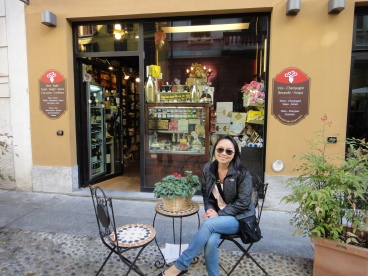



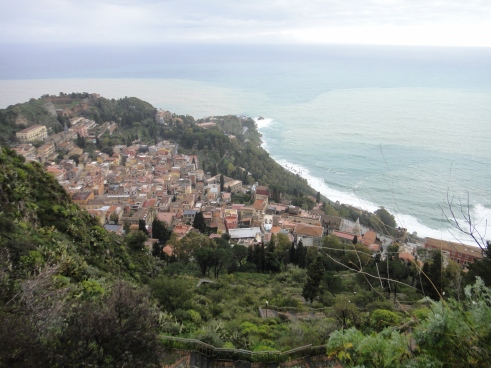



























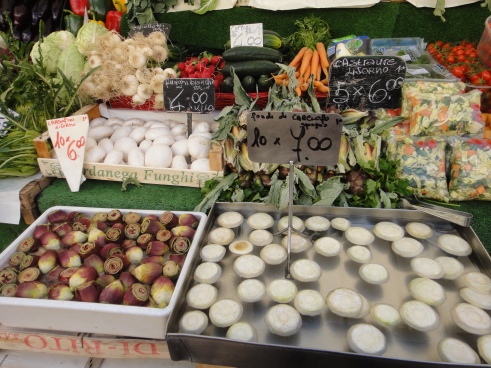




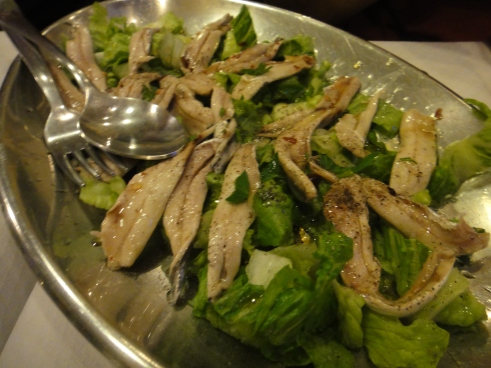
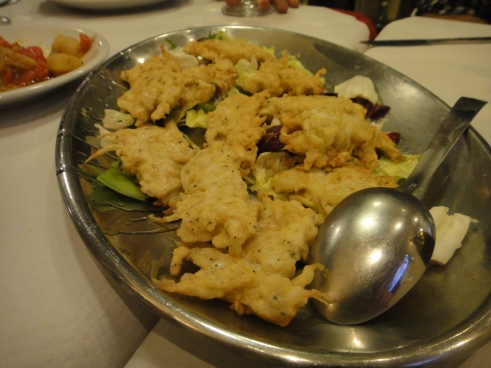


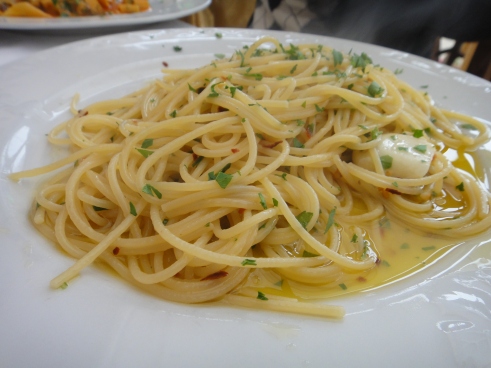
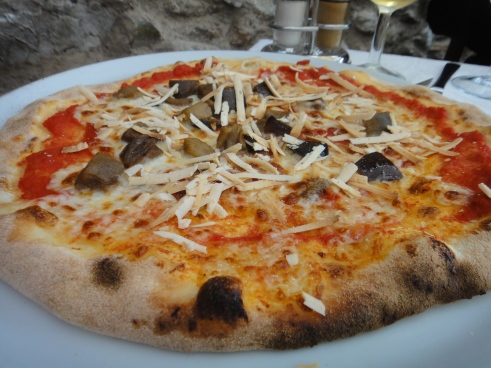



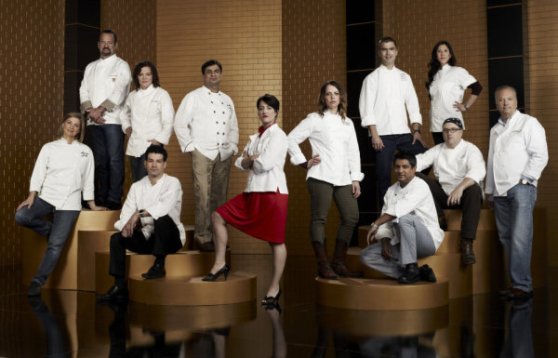
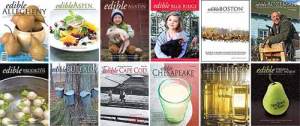
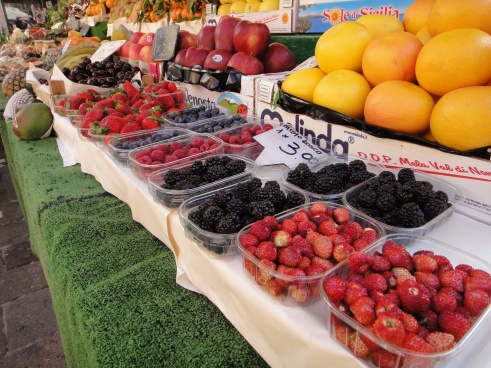

Hi, can you please email me at emorgan1@condenast.com regarding featuring your photograph of paella? Thank you!
Elizabeth